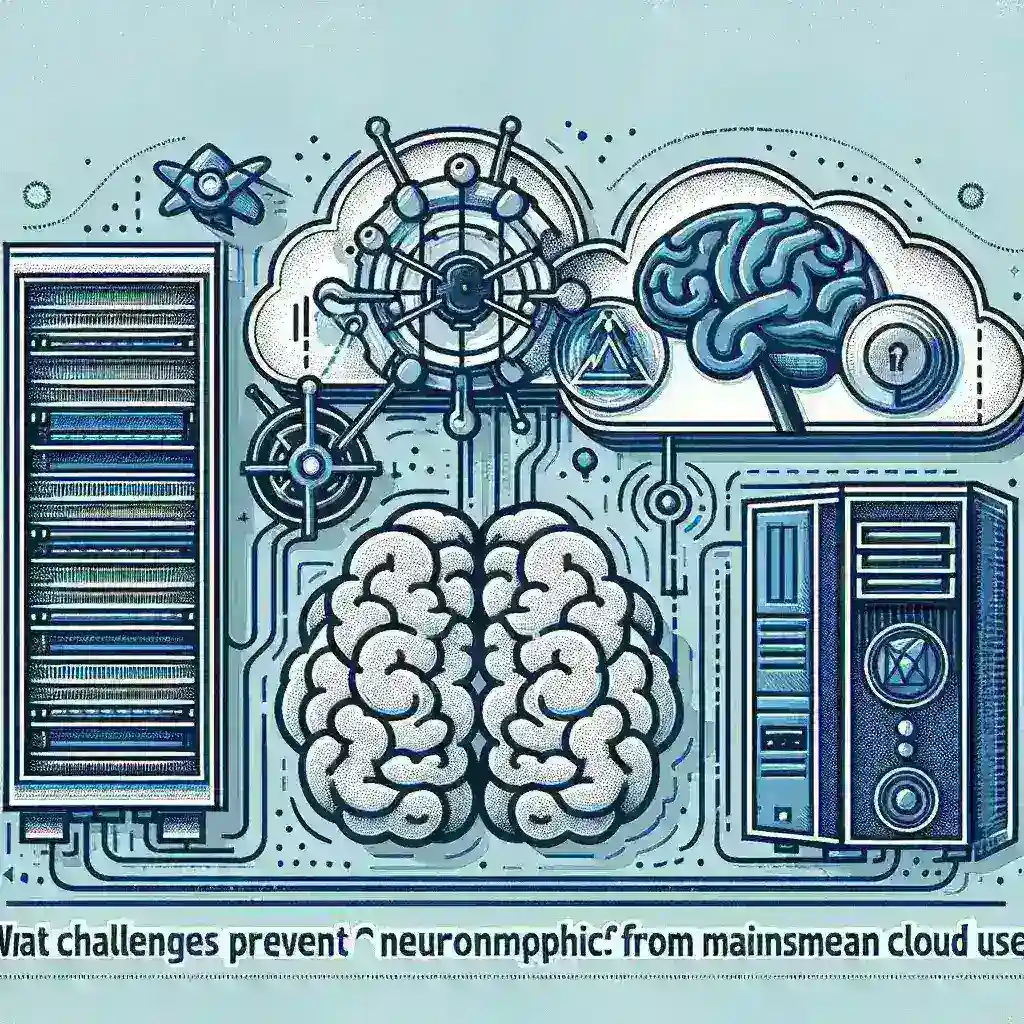Understanding Neuromorphic Computing
Neuromorphic computing is a cutting-edge approach to computing that mimics the neural structure and operation of the human brain. Unlike traditional computing architectures, which rely on the binary processing of data, neuromorphic systems process information in a way that is more akin to human cognition. This emerging technology promises significant advancements in areas such as artificial intelligence (AI), machine learning, and data processing, yet faces numerous challenges that prevent it from being integrated into mainstream cloud usage.
The Current State of Cloud Computing
Cloud computing has transformed how businesses and individuals use technology. It offers scalability, flexibility, and cost-effectiveness, enabling users to access resources and applications over the internet. However, as organizations increasingly adopt cloud services, they seek innovative technologies to enhance their offerings. Neuromorphic computing holds great potential in this space, but several hurdles must be overcome for its mainstream adoption.
Key Challenges Preventing Neuromorphic Computing from Mainstream Use
1. Technical Limitations
The first challenge facing neuromorphic computing is the technical limitations inherent in the technology itself.
- Architecture Complexity: Neuromorphic systems often utilize specialized hardware that is not yet widely available or understood in the context of existing cloud infrastructures. This complexity can result in compatibility issues.
- Lack of Standardization: There is currently no industry-standard framework for neuromorphic computing, making it difficult for developers to create applications that can function across different platforms.
- Scalability Concerns: While neuromorphic computing is designed to mimic the brain’s parallel processing capabilities, scaling such technology to handle the vast amounts of data typical in cloud environments poses significant challenges.
2. Economic Factors
Considerations around costs can also impede the adoption of neuromorphic technology in cloud computing.
- High Initial Investment: Developing neuromorphic systems requires substantial investment in research and development, which can deter many organizations from pursuing this avenue.
- Operational Costs: The maintenance and operation of neuromorphic systems may also incur high costs, making it less attractive compared to traditional computing solutions.
- ROI Uncertainty: The return on investment for neuromorphic computing is still uncertain. Many businesses are hesitant to allocate budget to a technology that has not yet proven its value compared to existing solutions.
3. Regulatory and Ethical Considerations
As with any emerging technology, regulatory and ethical concerns can serve as barriers to entry.
- Data Privacy and Security: The integration of neuromorphic systems into cloud services raises questions about data privacy and security. Companies must ensure that these systems comply with regulations such as the General Data Protection Regulation (GDPR).
- Ethical Implications: The use of neuromorphic computing in AI applications may raise ethical dilemmas, particularly as these systems become more autonomous and capable of making decisions.
- Regulatory Frameworks: The absence of clear regulatory frameworks for neuromorphic computing could hinder its implementation in cloud environments, as companies may be wary of potential legal ramifications.
4. Market Readiness
The readiness of the market to embrace neuromorphic computing is another significant factor.
- Limited Awareness: Many businesses are still unfamiliar with the benefits and applications of neuromorphic computing, resulting in a slow adoption rate.
- Skill Gaps: There is a shortage of skilled professionals who understand neuromorphic computing, which can make it challenging for organizations to develop and implement such technologies.
- Competition with Established Technologies: Established computing paradigms, such as traditional cloud infrastructure, continue to evolve and improve, creating competition that neuromorphic technologies must contend with.
Future Outlook for Neuromorphic Computing in Cloud Services
Despite these challenges, the future of neuromorphic computing in cloud services holds promise. As advancements continue, organizations must address the technical, economic, regulatory, and market readiness obstacles. The following factors could facilitate the integration of neuromorphic technologies:
- Research and Development: Increased investment in R&D could lead to breakthrough advancements that simplify the integration of neuromorphic systems in cloud infrastructures.
- Public Awareness Campaigns: Raising awareness about the advantages of neuromorphic computing could encourage businesses to explore its applications.
- Collaboration: Collaboration between technology developers, cloud service providers, and regulatory bodies will be essential to create a conducive environment for neuromorphic systems.
Conclusion
Neuromorphic computing has the potential to revolutionize cloud computing by bringing about new levels of efficiency, speed, and cognitive capability. However, the challenges preventing its mainstream adoption must be addressed through a concerted effort from stakeholders across various sectors. By overcoming technical limitations, economic barriers, regulatory concerns, and market readiness issues, neuromorphic computing can pave the way for a new era of cloud services that harness the power of brain-inspired technology.




